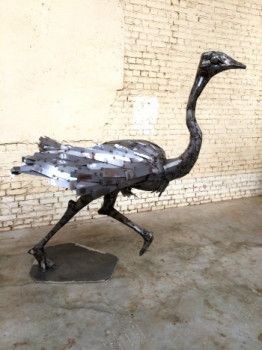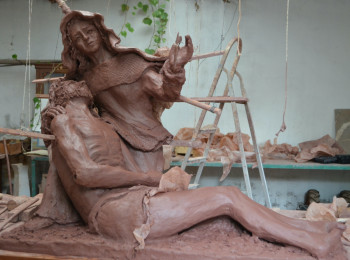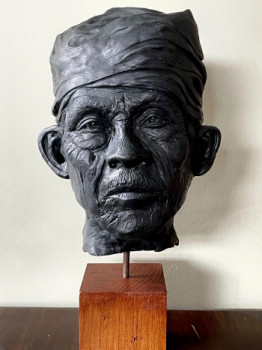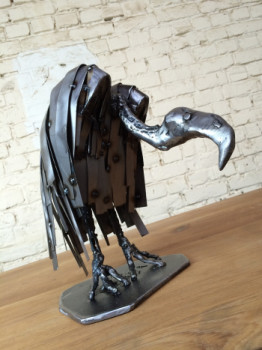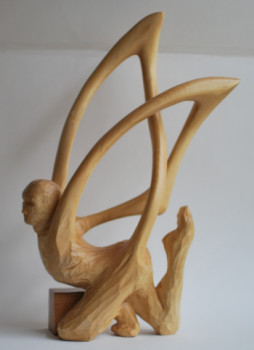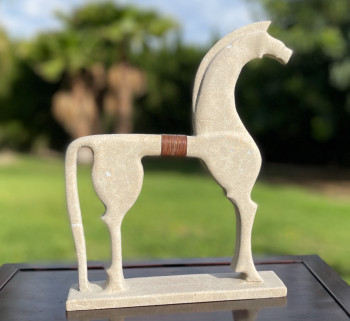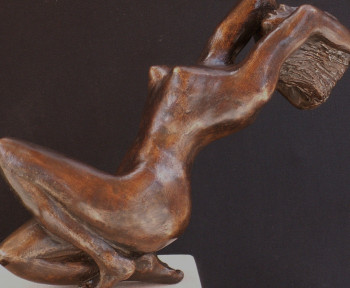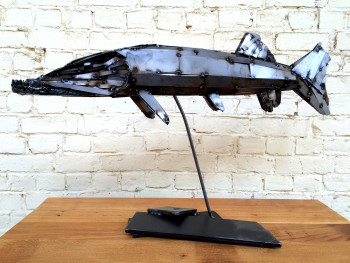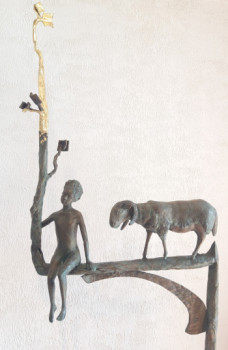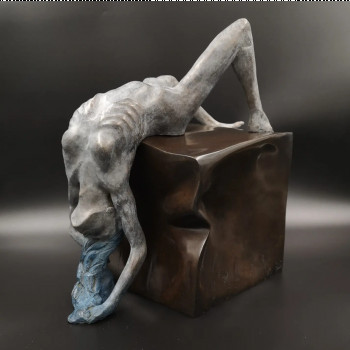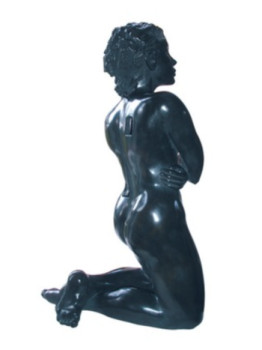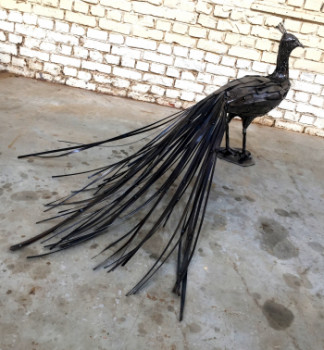
Bourdelle, the sculptor who left his giant mark on the 20th century

Certain talents seem to be passed down from father to son. Within the family of Antoine Bourdelle, the love of sculpture undeniably follows this path. Then, one day, an extraordinary descendant transforms this knowledge make it a major part of art history.
Origins of the sculptor
The life of Antoine Bourdelle began in 1861, in the south of France. At that time, his family resided in Montauban. It is within this quiet commune that the child discovers drawing . Displaying obvious predispositions, his parents let him explore this discipline at will. leisure. It is the same for his school teacher who does not wish to restrict such an early vocation. The child's learning days mostly take place at the back of the class, with pencils in hand. hand and new projects at hand draw. The progress of young Bourdelle is impressive. Such sensitivity artistic, in his case, did not come out of nowhere. His father is a craftsman sculptor on wood. At his side, Antoine also learned the art that he would make his own throughout his life and that he would imbue with his talent: sculpture. When he At the age of thirteen, Bourdelle left school and began his apprenticeship as a cabinetmaker, directly in his father's workshop. However, the flame he nourished for drawing did not go out, which is why he took evening classes for several years.
Modeling, drawing and sculpture
His skills will come in handy quickly. From 1876, then aged At only fifteen years old, the young Bourdelle attracted attention. It is true that, despite At his early age, he already possessed numerous high-quality works. Thanks to this, and with numerous local supports, the sculptor artist in the making enters the world. the Academy of Fine Arts, located not far from his home, in Paris. Toulouse. A scholarship is then awarded to him. Eight years will pass like this, perfect your techniques and grow as an artist. With such background, in 1884, Bourdelle won his place at the University of Paris. the Ecole Supérieure des Beaux-Arts, renowned throughout the capital and beyond. across the whole world. Paris becomes his second home.
Beginning of an impressive career
His presence at Paris allows the young sculptor to make decisive encounters. The links he forges with Alexandre Falguière, known for his paintings and his sculptures, opened the doors of the latter's workshop to him, who became his new master for the occasion. Very quickly, the band started playing. Schnegg offered him a place within the collective. When he arrived in this conglomerate of artists, Bourdelle met Lucien Schnegg, François Pompon and many other big names of the time. His surname being whispered more and more in the streets of the capital, the sculptor artist can finally claim to be an artist. his first official exhibition. It's up to you On this occasion, at the Salon des artistes français, he presented his work called "Hannibal's First Victory". This sculpture earned him widespread acclaim. like an accomplished artist, which will mark an important turning point in his career. For him, the École Supérieure des Beaux-Arts is over. Place at; new adventures.
Bourdelle’s workshop
Leaving the Fine Arts, the sculptor opened his own workshop. A space that resembles him, that inspires him and from which he will never part. Despite the success of his first exhibition and a talent that no one can deny him, he encountered some difficulties in making a full living from his art. However, he never became discouraged. For some time he accepted various orders. It was during one of these works that he had the opportunity to collaborate with Théo Van Gogh. Most of its income comes from: At the time, his interactions with an office bringing together a number of Parisian art sellers. The difficulties he encountered during these years marking his life as a young adult are felt through his creations. The latter, at the same time, at that moment, want to be the mirror of his melancholy.
Bourdelle and Rodin
The year 1893 was decisive for the sculptor artist. The latter met Rodin and became one of his closest friends. Moving forward in concert, the notoriety of Rodin ended up also referring to his new disciple. Bourdelle can then rejoice, because he now has the opportunity to to export his art to the rest of the world, through several exhibitions which have met with great success. Recognized for the quality of his sculptures, the artist does not forget his first love: drawing. It continues to blacken pages and pages of drawing paper. He sketches, he depicts, he captures shapes, colors, the abstract, anatomy. This is not surprising since the drawing represents the very first stage of each of his projects. No sculpture has come to life without it having been designed by him beforehand. In total, Bourdelle will leave behind an impressive legacy of more than 6,000 drawings.
Bourdelle said...
"Sculpture, ultimately, is nothing other than drawing in every sense." Antoine Bourdelle.
"It's good to be, but the important thing is to become." Antoine Bourdelle.
Consecration of the sculptor
The Universal Exhibition, having taken place in 1900, was a boon for many artists, including Antoine Bourdelle. After this major event, the artist will have the honor of taking charge of the decoration of the famous Grévin Museum. By distancing himself, artistically speaking, from Rodin, Bourdelle can finally find his style. Inspired by archaic Greece, the sculptor gives birth to the "Head of Apollo", a major work. However, Rodin was never far away and it was with him that Bourdelle created a free education school, entirely dedicated to the sculpture.
A precious heritage
Until 1923, he divided his time between teaching and creation. He sculpts in particular:
- Penelope,
- the Monument to Mickiewicz.
His most famous student is called Matisse. After his appointment as a Knight of the Legion of Honor and the founding of the Salon des Tuileries, health was greatly improved. begins at degrade, forcing it to deteriorate. withdraw little to; small part of the international artistic scene. Antoine Bourdelle, whose real name was Emile-Antoine Bourdelle, died on October 1, 1929, in Vésinet.
Découvrez quelques oeuvres inspirées de Bourdelle

